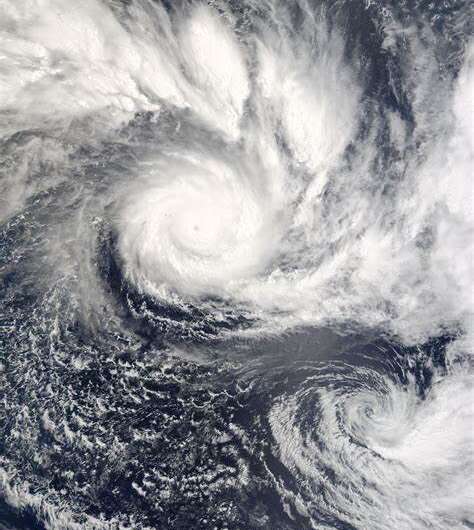This article has been reviewed according to Science X's editorial process and policies. Editors have highlighted the following attributes while ensuring the content's credibility:
fact-checked
peer-reviewed publication
trusted source
proofread
Initial wind field structure: A crucial factor in determining tropical cyclone size and intensity

Tropical cyclones (TCs) are responsible for significant damage to property and human life. The size and intensity of these storms are critical factors in determining the level of destruction they can cause. However, the relationship between a TC's size and intensity during its development phase has been difficult to understand.
Now, a team of researchers led by Prof. Chen Guanghua from the Institute of Atmospheric Physics of the Chinese Academy of Sciences has revealed this relationship by examining the wind field structure of TCs during their formation.
The researchers analyzed the relative impacts of two critical parameters—the radius of maximum wind (RMW) and the radial decay of winds outside the RMW—on the degree of size expansion under the same level of intensity increment.
The study was published in Advances in Atmospheric Sciences on May 12.
They found that vortexes with larger RMW and broader wind fields tended to expand more under the same level of intensity increment, highlighting the importance of paying attention to incipient storms with large RMW.
The researchers also discovered that RMW played a major role in the size-intensity relationship. Increasing the initial RMW significantly slowed down the organization and development of the eyewall convection, leading to slow intensifying. On the other hand, initially broader winds allowed for active outer convection and were favorable for size expansion, which could lower wind transports to the inner region and impede intensification when the RMW was large.
"This study is a preliminary attempt to comprehend physical mechanisms responsible for the variation of size-intensity relationship," said Prof. Chen. "Further research is ongoing to incorporate more complex internal and external forces."
Understanding the size and intensity relationship of TCs is crucial for estimating their potential destruction. The findings of this study can help to improve our ability to predict and prepare for these devastating natural disasters.
More information: Kexin Chen et al, Modulation of the Wind Field Structure of Initial Vortex on the Relationship between Tropical Cyclone Size and Intensity, Advances in Atmospheric Sciences (2023). DOI: 10.1007/s00376-023-2233-4
Journal information: Advances in Atmospheric Sciences
Provided by Chinese Academy of Sciences




















